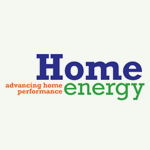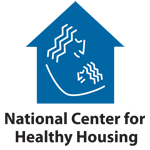|
|
Health & Safety
We do not strictly control Google ad content. If you believe any Google ad is inappropriate, please email us directly here.
Sort results by: Date Added | Alphabetically - According to EverydayHealth.com, there is good news and bad news about older homes. There are also simple steps you can take to make a big difference.
- Improving and cleaning your air is an often forgotten task of spring cleaning.
- Is it possible to build without toxins, using breathable walls, and still have an energy-efficient, cost-effective home?
- Nanoparticles are now being used in many consumer products. But how safe are they?
- Spring cleaning is the time to get tough with the dirt, but not with your health. Here's how to choose less toxic green cleaners this spring and anytime of the year.
- Taking note of the recent earthquake in Japan should prompt us to take practical steps to prepare ourselves and our families for potential disasters.
- It’s ironic that some products designed to make our homes cleaner and healthier may contribute to asthma.
- While they may not have asthma, allergies, or chemical sensitivities, they may have other life-draining health complaints related to unhealthy homes.
- Sometimes people with asthma, allergies or sensitivities just can't seem to find relief. Why don't air cleaners help these people?
- Simran Sethi talks about her personal struggle in learning to organize and letting go of clutter.
- Most of us have heard of MRSA, but do we really understand the threat it presents? Maryn McKenna reveals what we don't know about this pathogen.
- While it is difficult to determine the dollar cost of poor indoor air quality (IAQ), insurance-industry observers agree that the costs may be unrecognized—and ascribed instead to more conventional medical conditions such as respiratory ailments, allergies, and asthma. One report on insurance costs found that “there is strong awareness and growing concern over the ‘silent crisis’ of IAQ and its potential to cause large industry losses.”
- Simran Sethi, green pioneer, media personality and Oprah.com columnist presented a free one-hour webinar, "Ten Steps to a Healthier Home" for The Healthy House Institute (HHI) on September 30th, 2010 at 10am CDT. The archived event is also free to access.
- One class of pollutants that has not been considered much involves the vast variety of human and animal prescription medications now being found in increasing concentrations in our water supplies.
- Better than an apple a day, certain foods can prevent childhood illnesses and fight off the effects of toxins.
- We usually put them into six categories.
- Some ERVs can recover formaldehyde in the same way that they recover water.
- When you consider the number of hours spent indoors, it only makes sense to build a healthy house, or convert your existing home into a healthy rather than an unhealthy one.
- Going beyond the surface of BP's obvious pollution, there is more damage done daily to the environment and our health.
- Research suggests that plastics containing Bisphenol-A are linked to child misbehavior. Read to find out how to protect yourself and your children.
We do not strictly control Google ad content. If you believe any Google ad is inappropriate, please email us directly here.



Information provided by The Healthy House Institute is designed to support,
not to replace the relationship between patient/physician or other qualified
healthcare provider.
Education Partners
Ads, ad links, products and content on this page are not necessarily endorsed by these organizations.
|

We do not strictly control Google ad content. If you believe any Google ad is inappropriate, please email us directly here.
|








